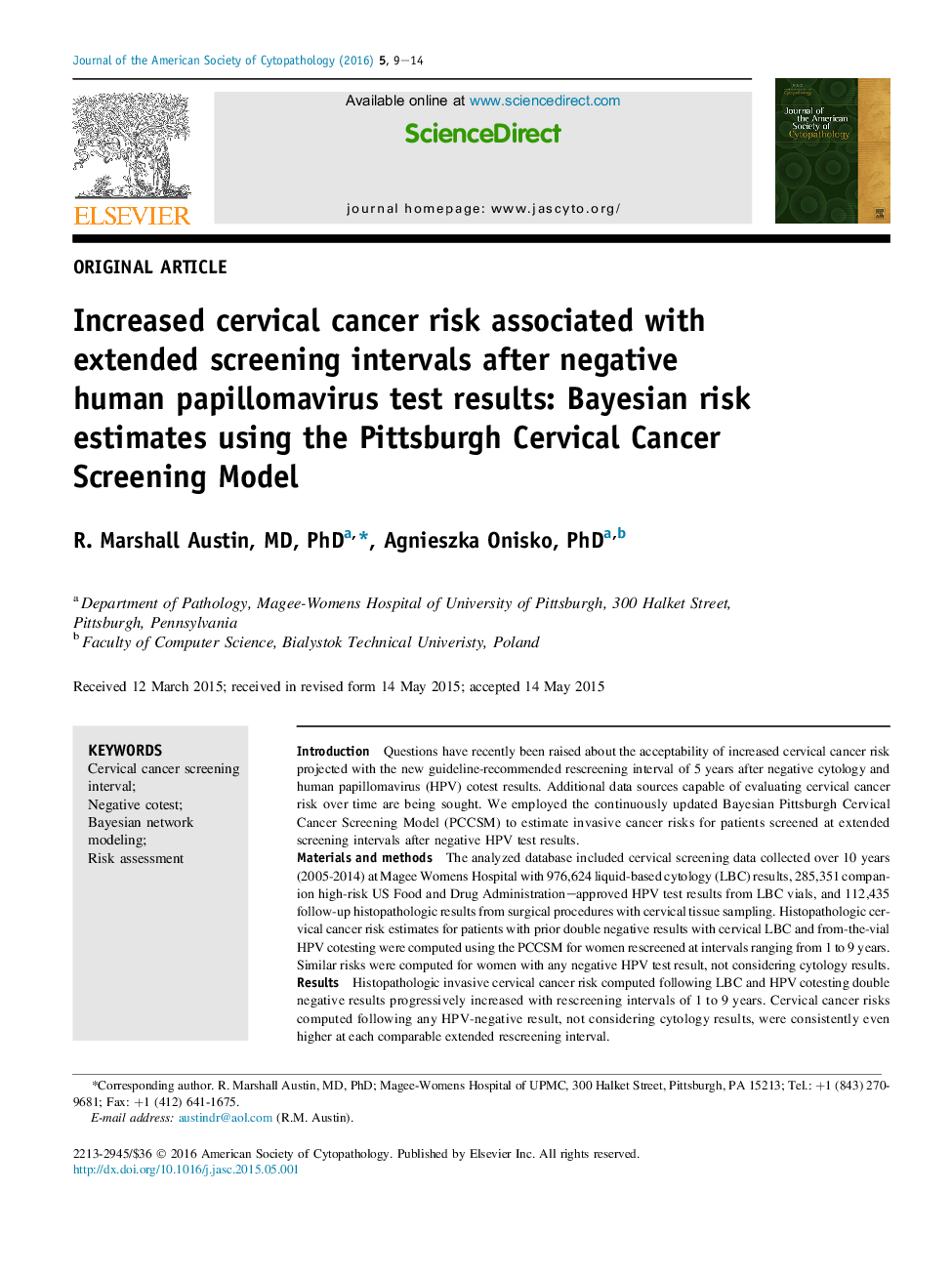| کد مقاله | کد نشریه | سال انتشار | مقاله انگلیسی | نسخه تمام متن |
|---|---|---|---|---|
| 2776549 | 1567935 | 2016 | 6 صفحه PDF | دانلود رایگان |
IntroductionQuestions have recently been raised about the acceptability of increased cervical cancer risk projected with the new guideline-recommended rescreening interval of 5 years after negative cytology and human papillomavirus (HPV) cotest results. Additional data sources capable of evaluating cervical cancer risk over time are being sought. We employed the continuously updated Bayesian Pittsburgh Cervical Cancer Screening Model (PCCSM) to estimate invasive cancer risks for patients screened at extended screening intervals after negative HPV test results.Materials and methodsThe analyzed database included cervical screening data collected over 10 years (2005-2014) at Magee Womens Hospital with 976,624 liquid-based cytology (LBC) results, 285,351 companion high-risk US Food and Drug Administration–approved HPV test results from LBC vials, and 112,435 follow-up histopathologic results from surgical procedures with cervical tissue sampling. Histopathologic cervical cancer risk estimates for patients with prior double negative results with cervical LBC and from-the-vial HPV cotesting were computed using the PCCSM for women rescreened at intervals ranging from 1 to 9 years. Similar risks were computed for women with any negative HPV test result, not considering cytology results.ResultsHistopathologic invasive cervical cancer risk computed following LBC and HPV cotesting double negative results progressively increased with rescreening intervals of 1 to 9 years. Cervical cancer risks computed following any HPV-negative result, not considering cytology results, were consistently even higher at each comparable extended rescreening interval.ConclusionsThe PCCSM is a new data source that allows evaluation of cervical cancer risk over time. Cervical cancer risk is minimized with more frequent cytology and HPV cotesting.
Journal: Journal of the American Society of Cytopathology - Volume 5, Issue 1, January–February 2016, Pages 9–14
